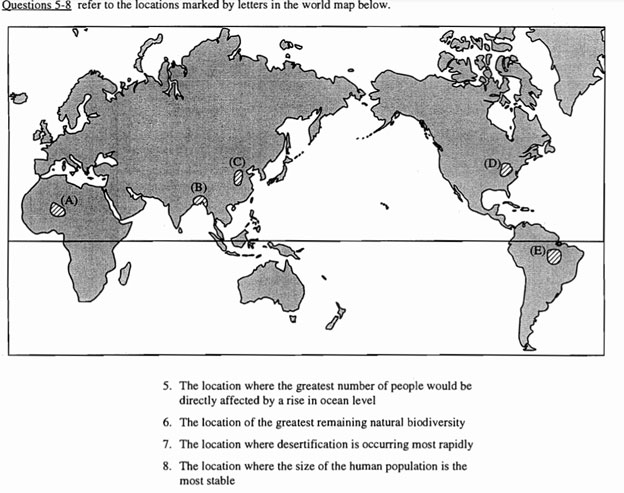Last Updated On: July 1st, 2024
AP Environmental Science (APES) is often thought of as an “easy” AP course that can help boost your GPA and make your transcripts look good on their college applications. However, students usually realize later on, almost too late, that APES is just like any other Advanced Placement course that not only pushes students to perform at the college level, but also requires students to have a fundamental grasp on a wide range of topics.
What makes APES especially challenging is that it is one of the few interdisciplinary courses that pushes students to incorporate fundamental concepts from disparate disciplines, such as biology, chemistry, physics, ecology, algebra, and statistics. Not only that, the high achieving students that score 4’s and 5’s will need to have a good understanding of world events, demographics, and so forth pertaining to the 20th and 21st centuries. Unlike other math or science AP’s, such as AP Calculus AB, where students only need to study “math,” and AP Chemistry, where students only need to study “chemistry,” successful students cannot study “environmental science” alone, expecting to earn a high score.
It may sound like an exhaustive list, but thankfully, CollegeBoard outlines their expectations, topics of interest, and exam formatting on their website.
Test Formatting:
APES is divided into two parts: a separate multiple choice and a free response section, to be completed in 2 hours and 40 minutes. Each school differs, but a 10 min break is usually administered in between the two sections.
Multiple Choice:
The multiple choice section has 80 questions with a time limit of 90 minutes. Most questions will involve recalling specific concepts and interpreting graphs and charts.
Multiple choice is 60% of the score, and FRQ is 40% of the score. It is scaled on a curve, and CollegeBoard does not publicly disclose data on score cutoffs, but in my professional experience, along with anecdotes when I personally took the exam, a 55-60% raw score will likely earn a 3, and raw scores above 75% earn a 5.
The most challenging aspect about the multiple choice section is that approximately 25%, or 20 of the questions, are about recalling random factoids, seemingly off-topic questions, and geography questions. Missing 20 questions out of 80 is too many, and this is where some educators fail to address those questions, in fear that too many “side notes” may seem off topic and may garner student and/or parent complaints, without realizing that memorizing and recalling “random” scientific and “current events” factoids is an integral part of the exam.
Examples include the following:
96. Which of the following series of numbers demonstrates exponential growth?
(A) 200, 199, 198, 197, 196…
(B) 1, 3, 5, 7, 9…
(C) 2, 4, 8, 16, 32…
(D) 1, 3, 9, 27, 81…
(E) 2, 4, 6, 8, 10…
Question #96 may seem like a random math question, and may not be “relevant” to APES in the strictest sense, but exponential growth is an essential concept that is required to understand population growth and so forth. So even if the syllabus states that the concept of exponential growth needs to be applied in a biological or an ecological context, CollegeBoard may outright test students on numerically identifying exponential growth.
Questions 25-28 refer to the following gases.
(A) Carbon dioxide
(B) Carbon monoxide
(C) Methane
(D) Radon
(E) Sulfur dioxide
25. Is an important precursor to acid rain
26. Has a stronger affinity for hemoglobin than oxygen has
27. Has been implicated as the cause of as much as 15 percent of lung cancer cases
28. Is a flammable gas produced by landfills
#27 has been a historically tricky question for my Southern California and Bay Area students to answer. Those of us who have lived in an older house with a basement, usually in the Midwest, Great Plains, or any other location that gets tornadoes or is built in a traditional setting, knows about basements and the correlation of higher than normal levels of radon in houses with older basements due to the radioactive decay of uranium. Unless the APES teacher goes over these factoids directly, it is difficult for most students to attempt to gain outside knowledge of these types of questions.
Although there is no publicly available CollegeBoard data on students’ regional differences in terms of scoring for specific questions, I would not be surprised that a student in Minneapolis would be able to answer #27 with a higher accuracy than a student in San Diego, simply due to differences in geography and culture.

This is where careless errors may occur. For example, for question #7, students may see the word “desert” for desertification and assume that they need to find the place with a “desert.” In this case, most students gravitate toward “A” since that is assumed to be the approximate location of the Sahara desert, however that is actually the approximate latitude of the savannas of Africa. Even if students answer this question incorrectly, it can be a teachable moment, where concepts such as latitude can be clarified, “locations closer to the equator are rainforests, latitudes slightly above 30 degrees, about a third of the way from the equator to the poles are usually deserts.”
Students should try to lump tricky key phrases into an infallible “word association” practice, where they think of “shrinking forests” when they see the word “desertification,” instead of “deserts.” When students are able to confidently associate “desertification” with “previously forested areas going away due to human practices such as global warming,” students will have an easier time picking the correct answer “E,” which is the Amazon rainforest.
Free Response Questions:
There are three free response questions, with multiple subsections. They are scored numerically according to the extent and formatting of questions. “Big picture” questions that require students to recall and interpret fundamental concepts will have a heavier weight on scoring, while factoids and “challenge” questions have less weight, essentially there to separate 4s from 5s.
Fortunately, CollegeBoard grants APES students some degree of freedom on the FRQ, as long as the data presented and the evidence/reasoning that students use answers the questions. Below is an excerpt from CollegeBoard.
- Question 1: Design an investigation presents students with an authentic environmental scenario accompanied by either a model/visual representation or quantitative data.
- Question 2: Analyze an environmental problem and propose a solution presents students with an authentic environmental scenario accompanied by either a model/visual representation or quantitative data.
- Question 3: Analyze an environmental problem and propose a solution doing calculations presents students with an authentic environmental scenario.
The hardest type of FRQ that my students encounter is “Question 1,” where students are required to “design an experiment.” Not only are students called upon to come up with a plausible experiment to test their hypothesis, it must be aligned with realistic parameters and concepts outlined in the APES coursework and syllabus. Prospective students should pay close attention when doing school-based lab work, so they can memorize a few scenarios that they can use as part of their “Question 1” framework. These questions can be hard to predict and are situational, but are topics should also be practiced before the test on a regular basis.
Conclusion:
In this exam, it is critical for students to know how to read maps and have a good sense of cardinal directions. Especially in this day and age, when we rely heavily on our mobile devices for directions, it is easy for the younger generation to forget how to navigate using spatial reasoning.
However, with enough time, resources, and guidance, motivated students are usually able to review and refresh on their high school chemistry, algebra, and biology concepts before delving into the more specific concepts pertaining to APES.
Below are some links to free resources. CollegeBoard posts previously released FRQ’s with administrator comments. Keep in mind that CollegeBoard will remove those questions with instructor feedback approximately a week or two before the test day. Khan Academy is another good resource, in conjunction with test preparation with a tutor.
It is natural for students to take things easy when the school year starts in August or September, but try to manage expectations and test anxiety early. Additionally, most students who are signed up for APES are also signed up for other AP courses, such as AP US History, AP Calculus, AP English, and so forth. Students mistakenly put APES as a lower priority, compared to other AP classes. Ultimately, APES is an interdisciplinary exam that should be put in equal weight with other AP coursework.
Photo by Armin Rimoldi from Pexels




















